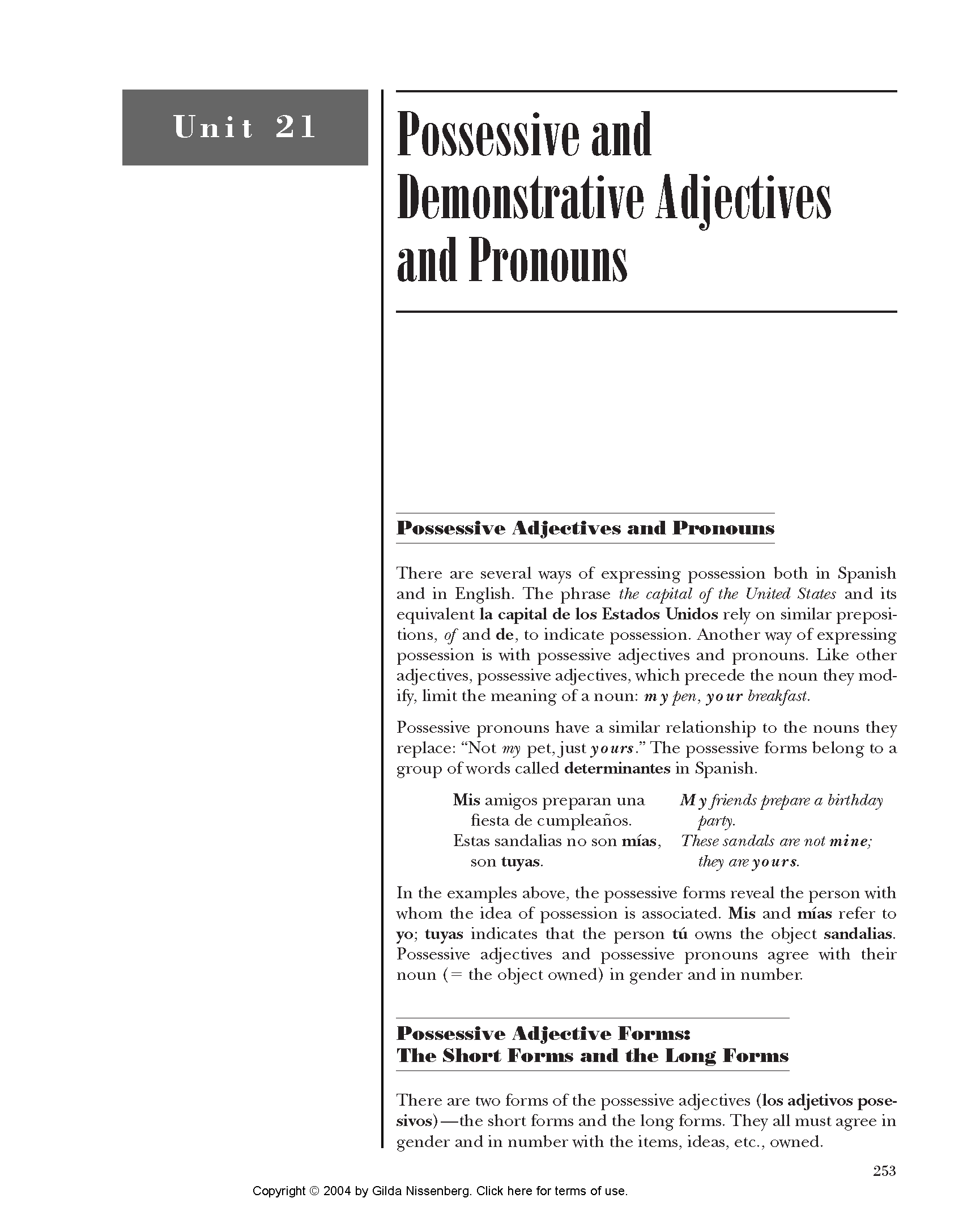CSG264

Unit 21
Possessive and Demonstrative Ad|ectives and Pronouns
Possessive Adjeetives and Pronouns
There are several ways of expressing possession both in Spanish and in English. The phrase the Capital of the United States and its equivalent la Capital de los Estados Unidos rely on similar preposi-tions, of and de, to indicate possession. Another way of expressing possession is with possessive adjectives and pronouns. Like other adjectives, possessive adjectives, which precede the noun they mod-ify, limit the meaning of a noun: my pen, your breakfast.
Possessive pronouns have a similar relationship to the nouns they replace: “Not my pet, just yours.” The possessive forms belong to a group ofwords called deteriniiiantes in Spanish.
Mis amigos preparan una fiesta de cumpleańos. Estas sandalias no son nhas, son tuyas.
M y friends prepare a birthday party.
These sandals are not minę; they are yours.
In the examples above, the possessive forms reveal the person with whom the idea of possession is associated. Mis and nhas refer to yo; tuyas indicates that the person tu owns the object sandalias. Possessive adjectives and possessive pronouns agree with their noun (= the object owned) in gender and in number.
Possessive Adjeetive Forms:
The Short Forms and the Long Forms
There are two forms of the possessive adjectives (los adjetivos pose-sivos)—the short forms and the long forms. They all must agree in gender and in number with the items, ideas, etc., owned.
Copyright © 2004 by Giida Nissenberg. Ciick here for terms of use.
253
Wyszukiwarka
Podobne podstrony:
Using GTlDs for Failover and Scaleout There are a number of techniques when using MySQL Replication
18 Waldemar Deluga 14 and Moldavia. There are several Moldavian editions illustrated with the e
Data types and sizes • There are only a few basie data types in C: - &
46407 Picture 6 Flying Parts and Wings There are two types °t Wings: Those that are vertical to the
Outstanding e the ad
UPSTREAM UNIT 1 COUNTABLE AND UNCOUNTABLE NOUNS Połącz: a) a piece of A)sugar b) a sum of B)
American phenomenon ot Oprah Winfrey and her talk show internet godz. 40-43 Unit 8 WAR AND
DSCN5271 Communication activities VvMa QLW- • Sprąwdz. s ’oją osobpwośc!Unit i, Reading and speaking
WELCOME KIDS ZESZYT ĆWICZEŃ 11 Unit 3
więcej podobnych podstron